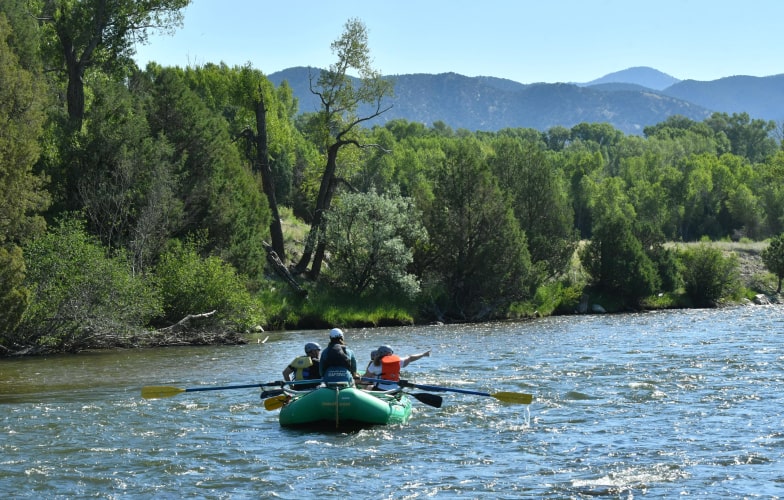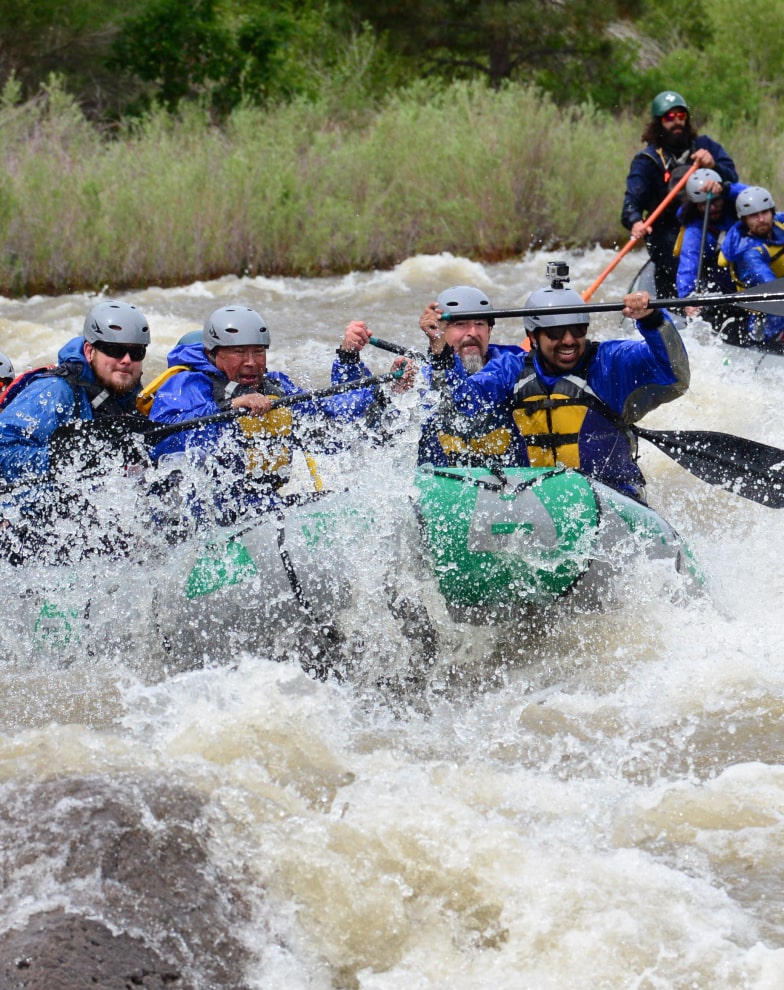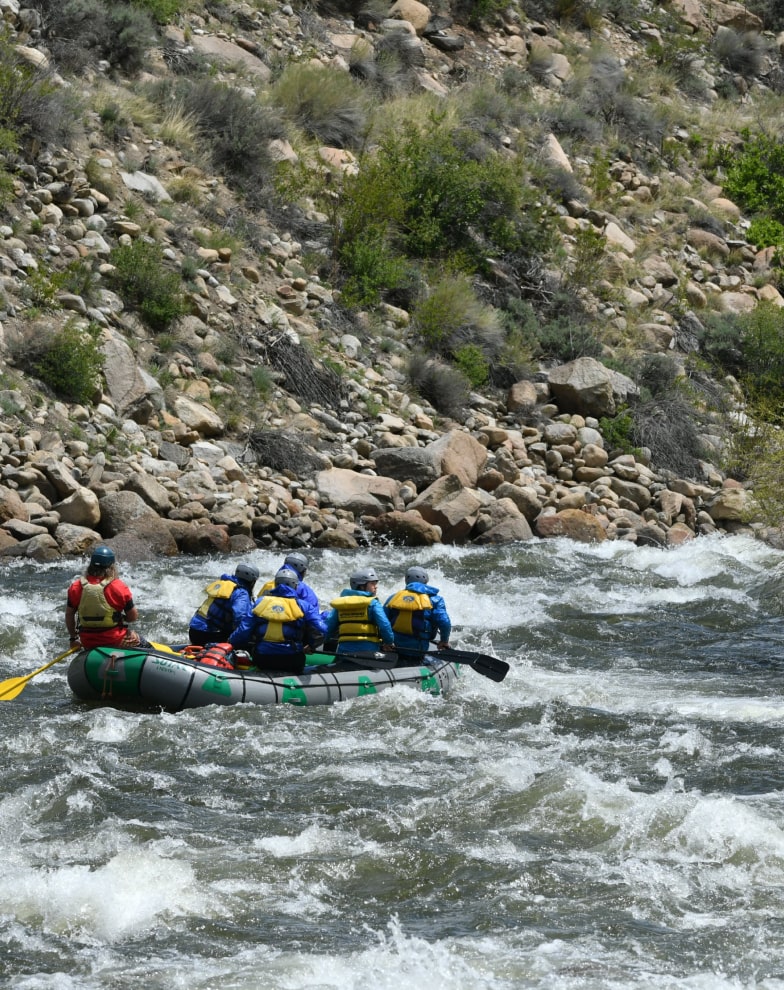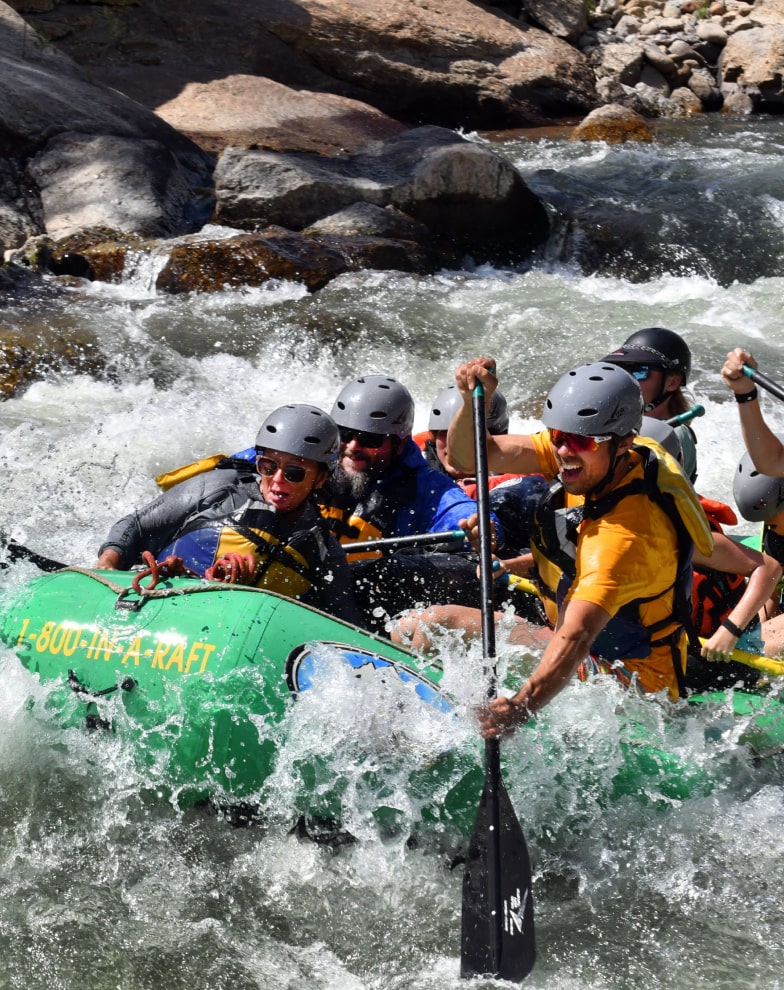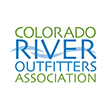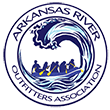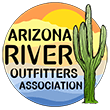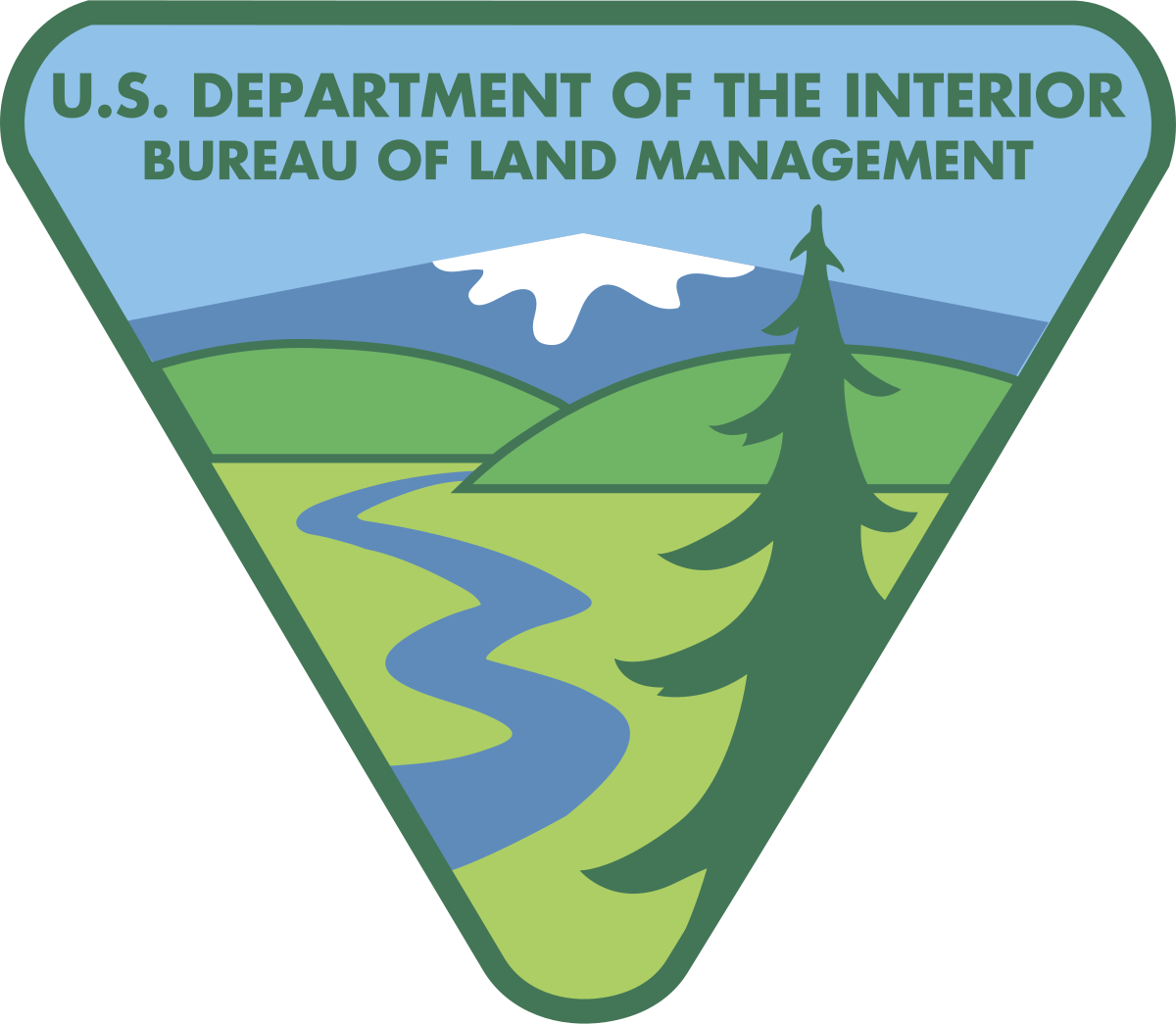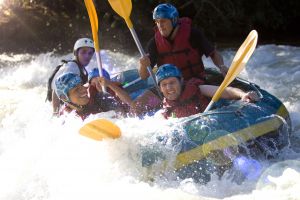
One of the best parts of Colorado white water rafting is gaining the ability to raft harder and more exciting rivers. We love taking on Mother Nature and the various challenges she throws our way. Even if you raft the same river year after year, it’s never quite the same. The various levels of water and time of year changes the shape of the river bends, the currents, and the obstacles.
A significant contribution to the water level is the snow we get each winter in Colorado, so pray for snow! In the spring, it melts off the mountains and the runoff feeds into the rivers below. Depending on how quickly the snow melts, June will see heavy waters. If it melts gradually, then the rivers will flow pretty consistently but with a gradual increase, usually peaking in July and low enough to end the rafting season by Labor Day.
When it comes to rafting high water, it can mean many things, but essentially, it means deeper water, faster currents, and higher risk. Keep your head in the game at all times. There’s a reason most of the country’s best white water rafters live in Colorado.
Maneuvering
You would think that with high water levels come more splash zones as you paddle downriver. However, high water usually covers up the boulders and rocks that the water splashes off of, thereby washing it out and creating big hydraulics but each wave is different. The parts of the river that are usually calm end up with new rapids.
Faster currents makes maneuvering between each stroke more difficult as you are traveling quickly and will shorten your rafting trip. Sticking with a guide with many years of experience is your best bet at getting the team to be where you want them to be and avoid anybody falling out. They will know how sharp to turn the raft and the best parts to float over.
Safety
Higher water levels means faster currents and an increased safety risk. Be sure that your life vest is on you tightly, your helmet is covering your forehead, and you have the proper shoes to protect your feet if you were to fall in. It is even more crucial than usual that you get your feet pointed down river and floating on your back while guiding yourself to the nearest shoreline. The swift speed at which you are flowing downriver may lead to an increased recovery time by your raft mates to come rescue you too.
If you are paddling with more than one boat, it’s better to stick closer together in case one needs to help the other. It also goes without saying but don’t drink alcohol before or during the rafting trip. Save the brewskies for celebrating afterwards.
At Wilderness Aware Rafting we love white water rafting and enjoying the great outdoors. If you’re interested in rafting, check out the Salt River whitewater rafting or Colorado water rafting trips we have available. Want more adventure? We also have many other fun outdoor trips available.
